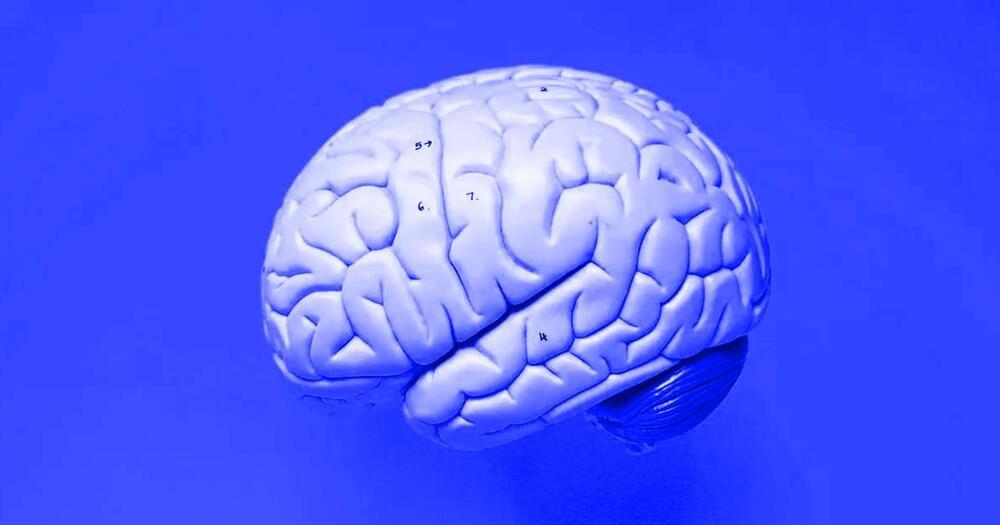So, today we are releasing the Crossmodal 3,600 dataset, which provides 261,375 reference captions in 36 languages for a geographically diverse set of 3,600 images.



I recently wrote about how viscoelastic fluids can be used in liquid body armor to stop bullets. While spacetime isn’t a fluid in the traditional sense, it has many of the same properties. In particular, it deforms when a massive body or any energy at all passes through it. The spacetime manifold resists deformation and seeks to return to flatness whenever a massive body passes on. This property is elasticity.
I’ve been blown away by #stablediffusion and AI art. In another video I’ve used #deforum and also had a look at #discodiffusion. This time I wanted to use Automatic1111. As a music producer and creator, I originally felt threatened by the technology but what I’ve come to realise is this. If you use it like a director/ producer you’ll be able to make things beyond that of the average AI art fan.
I challenged myself to produce a track and video in under 12 hours and created this, using a combination of over a decades worth of creative insights and a new piece of AI tech (Stable Diffusion), I’m absolutely blown away by the results.
💬 | DISCORD
‘Pretty empty right now but the aim’s to eventually have it as a creative network where people can share insights into art and tech’
https://discord.gg/HNecqYUwZT
◆ THANKS FOR YOUR SUPPORT ◆
Building a channel takes a lot of work and I wouldn’t be able to do it without all the support, so it’s much appreciated!
◆ LINKS ◆

A team of researchers at Northwestern University has devised a new platform for gene editing that could inform the future application of a near-limitless library of CRISPR-based therapeutics.
Using chemical design and synthesis, the team brought together the Nobel-prize winning technology with therapeutic technology born in their own lab to overcome a critical limitation of CRISPR. Specifically, the groundbreaking work provides a system to deliver the cargo required for generating the gene editing machine known as CRISPR-Cas9. The team developed a way to transform the Cas-9 protein into a spherical nucleic acid (SNA) and load it with critical components as required to access a broad range of tissue and cell types, as well as the intracellular compartments required for gene editing.

Introducing: The Synthetic Party, a new political party in Denmark that hopes to soon have a parliament seat. Oh, and by the way, its head honcho, Leader Lars, is actually an AI chatbot, and all of its policies are AI-derived. Cool?
Asker Staunæs, the creator of the party and an artist-researcher at the nonprofit art and tech organization MindFuture, told Motherboard that Leader Lars is specifically trained on policies formed by post-1970 Danish fringe parties — and thus, he says, the party is designed to collectively represent the roughly 20 percent of present-day Danish voters whose parties remain unrepresented in parliament.
“We’re representing the data of all fringe parties, so it’s all of the parties who are trying to get elected into parliament but don’t have a seat,” Staunæs told the site. “So it’s a person who has formed a political vision of their own that they would like to realize, but they usually don’t have the money or resources to do so.”
The top machine learning researcher at Facebook is quietly building a roadmap towards an “autonomous” AI that has common sense.

(Use Promo Code PRODANDNEURO For 15-percent Off Your First Purchase)
This is not a knock on caffeine by any means. There’s a reason people have been consuming it for thousands of years. It works by blocking the neurotransmitters in the brain that produce drowsiness. This keeps your neurons firing at full speed, which makes you feel awake. And studies show it is very effective at boosting mood. But what if you could do more for your brain than simply tricking it into being awake? What if you could give your brain nutrients that help it work better all the time? Well, with a well-designed nootropics supplement, you can.
Nootropics are often marketed as “smart drugs,” which gives the impression that they’re going to boost your IQ and turn you into a rocket scientist or brain surgeon. But that is not actually the case. Nootropics are simply chemical compounds that help create the biological conditions necessary for optimal brain function. They include things like amino acids, vitamins, minerals, nutrients, and even stimulants such as caffeine. Some of these compounds serve as fuel for cognition. Others modulate various processes involved in neurotransmission.

Fellow webinar participant Christopher Mason, a geneticist at Weill Cornell Medicine, argued that gene-hacking astronauts could even be a moral imperative.
“And are we maybe ethically bound to do so?” Mason said. “I think if it’s a long enough mission, you might have to do something, assuming it’s safe, which we can’t say yet.”

The uses of such a robot include ocean farming, diver support, and monitoring of coastal ecosystems.
Yale University researchers in the U.S. have developed a new amphibious turtle robot that has the ability to transform its legs into flippers.
The amphibious robotic turtle, known as ART (Amphibious Robotic Turtle), was inspired by the land and aquatic turtles, a group whose fossil record dates back over 110 million years, according to a press release published by the university on Wednesday.

On Sunday, October 9th, astronomers around the world were privy to an unusually bright and long-lasting pulse of high-energy radiation that swept over Earth, according to a NASA statement published on Thursday. The source of the event was a gamma-ray burst (GRB), one of the most luminous events ever known.